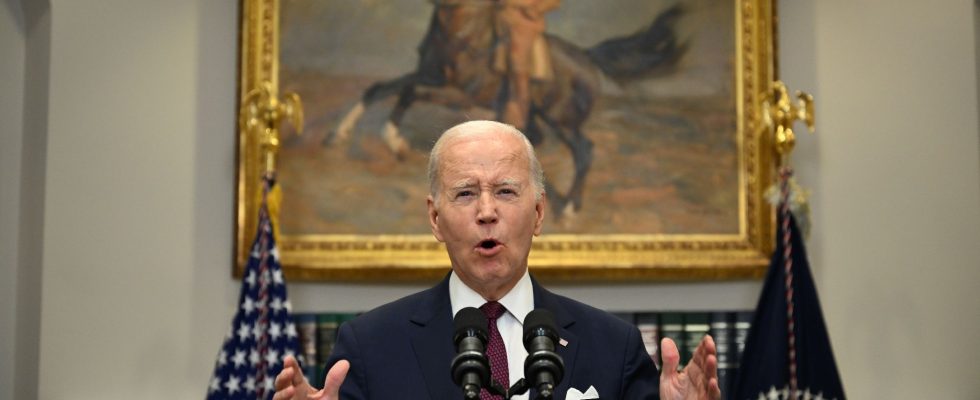It was a measure announced by Joe Biden last August: the partial cancellation of student debt for people earning less than $125,000 a year. But the promise of the American president came up against the very conservative Supreme Court, this Friday, June 30. She rejected the measure, finding, by a majority of six judges out of nine, that the government had exceeded its powers by adopting this costly program without authorization from Congress.
“There are millions of Americans who feel disappointed, discouraged and even a little angry because of the judgment, and I must admit that I do too”, reacted the head of state during a televised address. .
Conservative turn
The government “cancelled about $430 billion in federal loans, completely writing off the debt of 20 million borrowers and lowering the median amount owed by another 23 million from $29,400 to $13,600,” said Conservative Magistrate John Roberts on behalf of the majority.
For him, “the question here is not: does something have to be done?’, but ‘who has the authority to do it?'”. However, he added, “among the greatest powers of Congress is the control of the portfolio”. In the process, the highest American court also authorized, for the first time, certain businesses to exclude LGBT + customers, signing a right turn after being profoundly overhauled by Donald Trump. By Thursday, she had already abolished affirmative action policies at the university, one of the achievements of the civil rights struggle of the 1960s intended to increase diversity on campuses.
As a year ago, during its historic volte-face on abortion, these three judgments were delivered with the support of six conservative judges, against the advice of three other progressive judges. The ruling on student loans represents in particular a major setback for Joe Biden, who hopes to win a second term in 2024 and is counting on the support of the working classes to achieve this.
26 million records
Higher education costs a fortune in the United States and nearly 43 million people have federal student loans to repay, for a total amount of 1.630 billion dollars. At the start of the Covid-19 pandemic, the government of Donald Trump froze the repayment of these loans under a 2003 law allowing “relief” for holders of student debt in the event of a “national emergency”. This measure, renewed without interruption so far, must end on August 31.
Anticipating this deadline, President Biden announced in August that he wanted to erase up to $20,000 from the slate of middle-income borrowers. The candidates had rushed and 26 million applications had been filed, at an estimated cost of more than 400 billion dollars, according to the White House.
Conservative states then filed a complaint to block the measure. According to them, the 2003 law, invoked by the administration, covers the freezing of the debt and not its cancellation. “We agree with them,” the Supreme Court’s conservative majority wrote on Friday. It is the Court which “exceeds its role” by “substituting itself for Congress and the executive to make a decision of internal policy”, criticized the three progressive magistrates for their part.
The new plan proposed by Joe Biden will respect this judgment, the president has said. It will be based on another text: the law on higher education of 1965. “We will support our new approach on a law different from my original plan”, he specified during a televised address.
